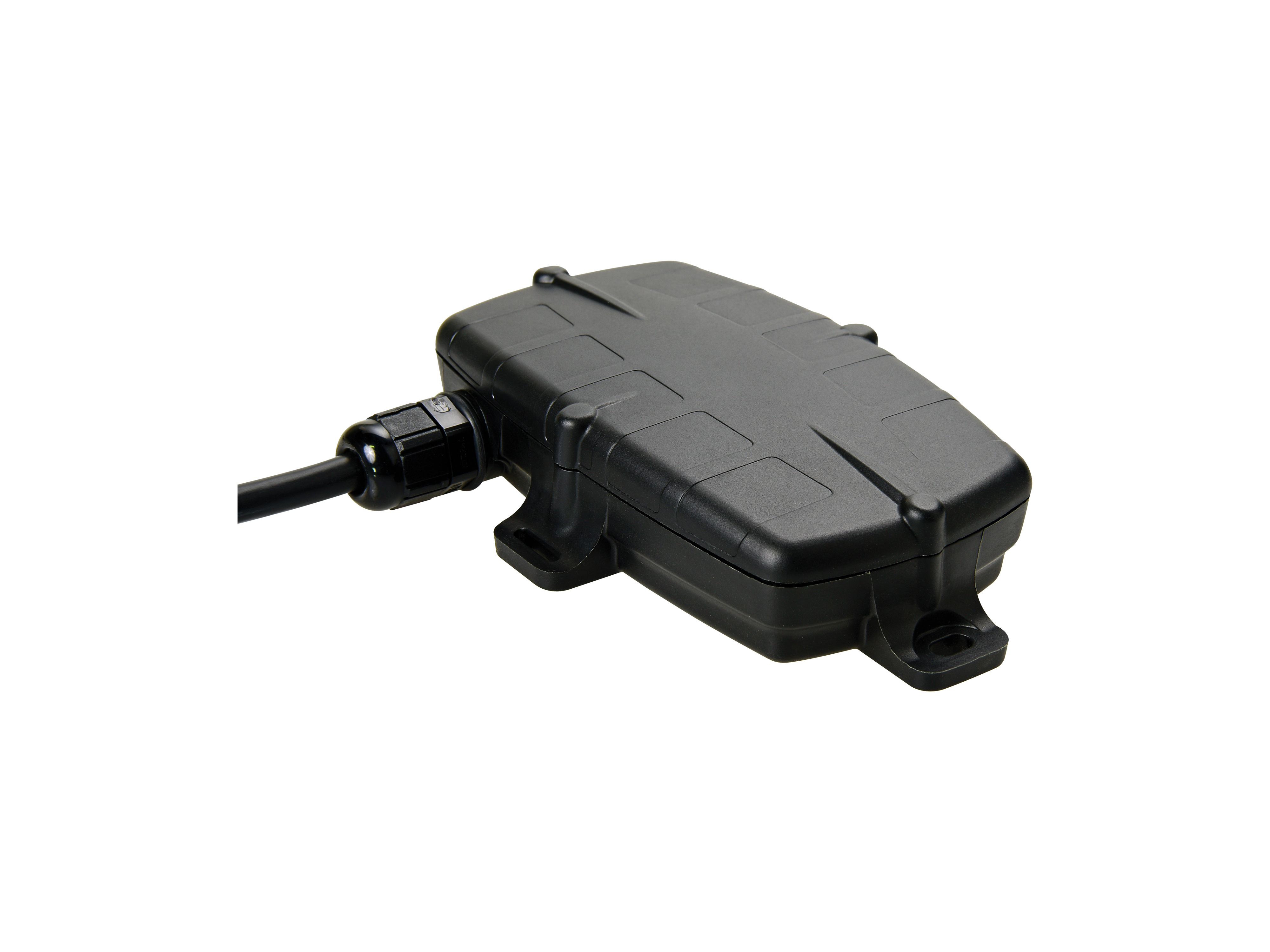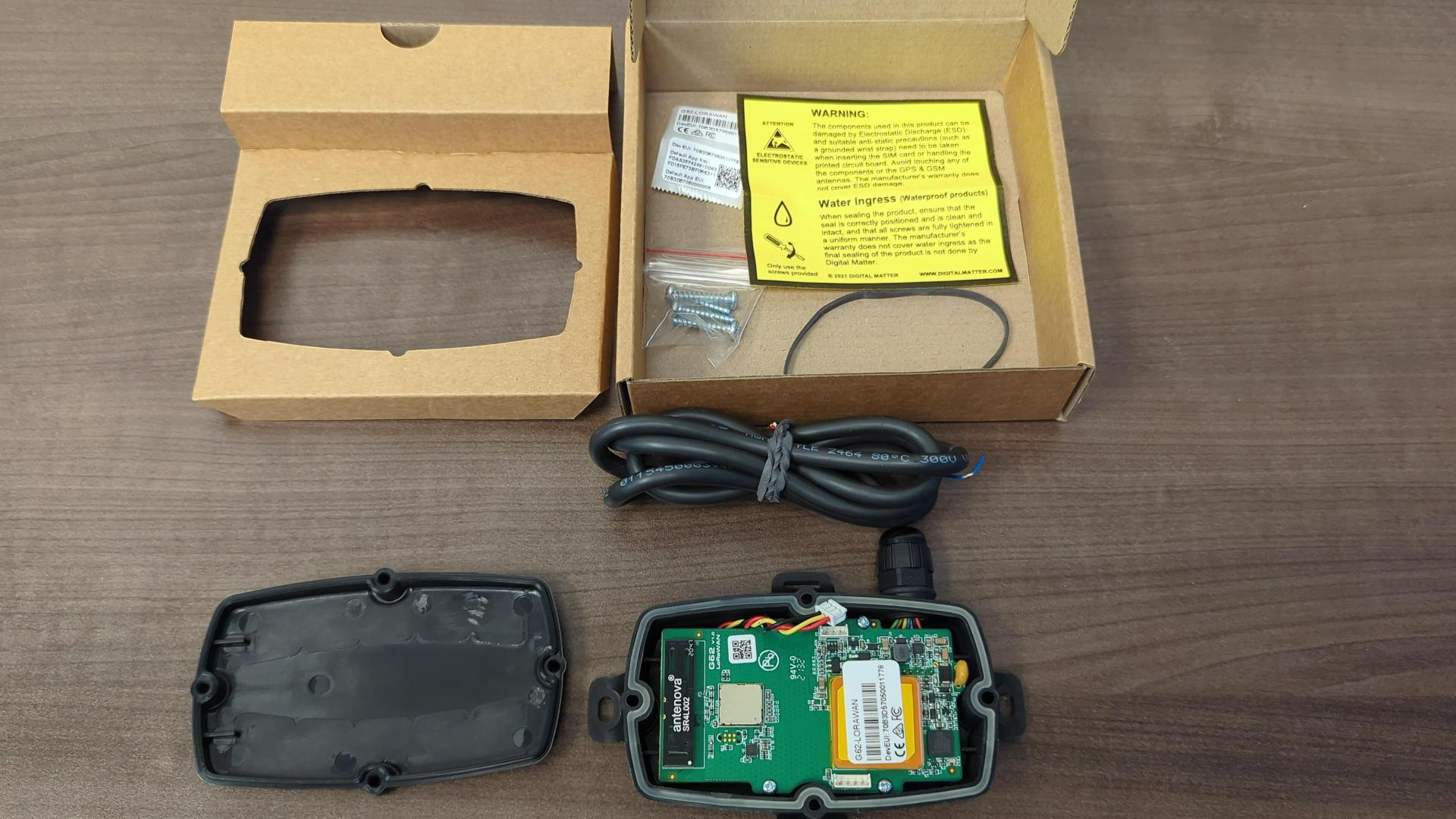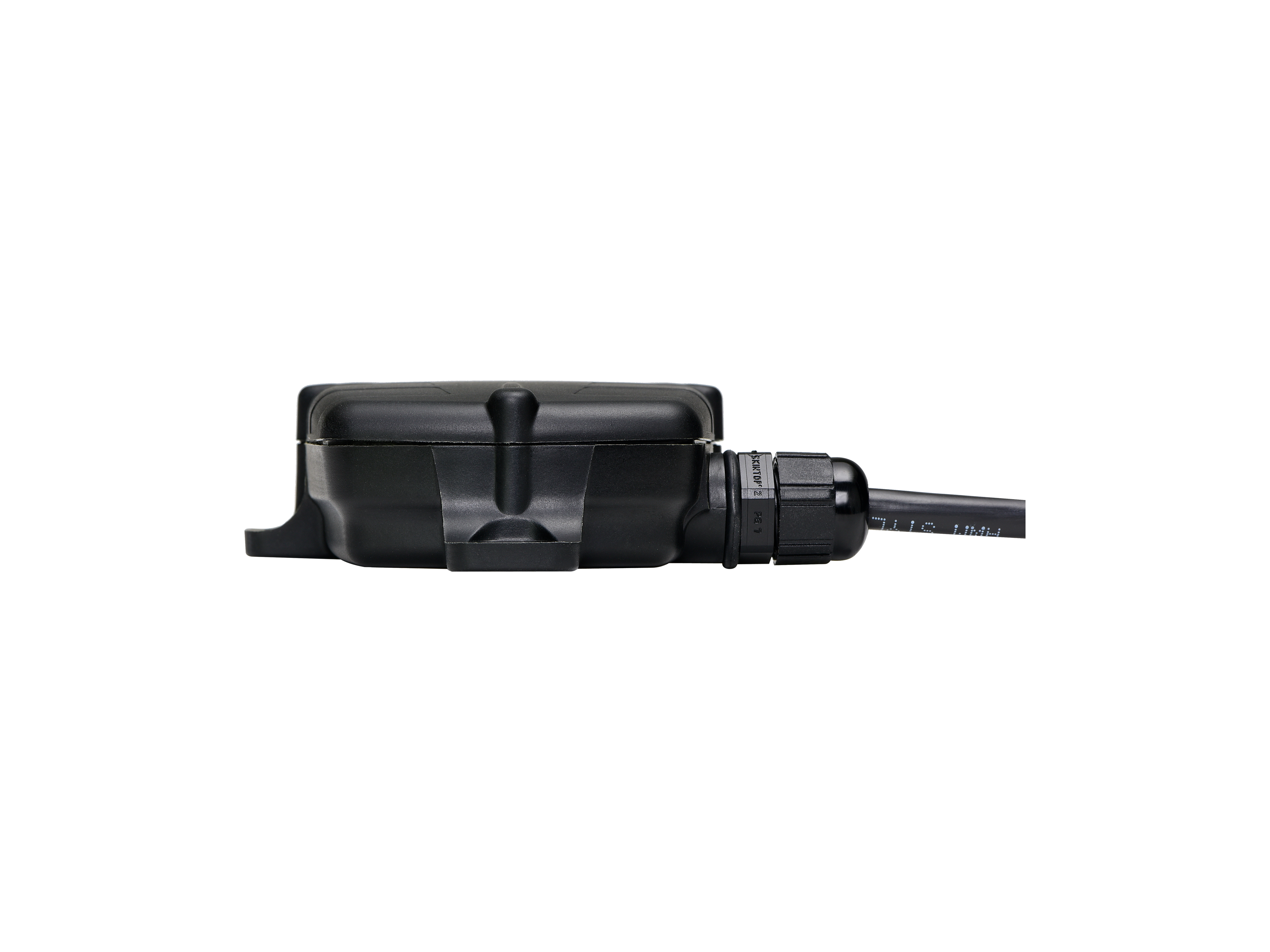Introducing the G62 LoRaWAN
Table of Contents
The G62 LoRaWAN is Digital Matter's robust and ultra-rugged vehicle and heavy equipment tracking device with inputs/outputs for fleet management, equipment monitoring on LoRaWAN networks.
Key Features:
- High-precision GPS/GLONASS tracking device
- Weatherproof and ultra-rugged IP67 Housing
- Internal Backup Battery in case of loss of power or tampering
- 1 x Analog Inputs, 2 x Digital Inputs, 1 x Switched Ground Digital Output, 1 x Ignition Digital Input
- On-device Odometer Readings
- Highly sensitive radio receiver is available in 868 or 902 – 928MHz versions for global LoRaWAN® connectivity.

Key Technical Specifications
Input Voltage |
8-36V DC (max) |
Self-Resetting Fuse |
Built-in self-resetting fuse makes installation simple and safe. Stringent automotive power “load dump” tests are conducted to ensure operation in the harshest electrical systems. |
Operating Current |
~25/50mA when moving |
Sleep Current |
<1mA |
Back-Up Battery |
1100mAh LiPo internal backup battery pack |
Full Technical Specifications:
Find full technical specs on the product page on our website
https://www.digitalmatter.com/devices/g62-lorawan/tech-specs/
High Resolution Images
Download high resolution images for the G62 LoRaWAN here: High Res Images
Configuration and Usage Guide
Devices parameters and firmware are configured via Digital Matter's LoRaWAN Provisioning Tool or via downlinks (parameters only). Make sure to check out the resources here.
Technical Support and Advice
Digital Matter partners should Contact Support for any product issues or enquiries.
Device Warranty
The G62 LoRaWAN is backed by a 2 year manufacturer's warranty. See Digital Matter Warranty Returns Policy for details.
Initial Provisioning
This guide is intended to assist new users in getting a G62 LoRaWAN online for the first time. Once you have some experience with the device, this process may change slightly.
e.g you may wish to queue parameter updates via the configuration tool before connecting to your network - so that the device picks up new settings once it gets online.
In the Box
You will get a compact box containing the G62 LoRaWAN. The 4 housing screws will be in a small packet inside the housing.

Provisioning Process
Electrostatic Discharge (ESD) Warning
The components used in the device can be damaged by Electrostatic Discharge (ESD). Suitable anti-static precautions (such as a grounded wrist strap) need to be taken when inserting the SIM card or handling the printed circuit board. Avoid touching any of the components or the GPS & GSM antennas. The manufacturer's warranty does not cover ESD damage.
1. Provision on LoRaWAN Network Platform
Devices will need to be added to your network provider's platform.
Example for TTN: Setup devices on The Things Network (v3)
If sending data to Telematics Guru see network providers currently integrated via LoRaWAN® Integration
2. Power Device
Connect internal LiPo battery
- The battery should be provided disconnected inside the housing. The battery plug is a three-way connector on the top side of the PCB.
- Insert the battery plug into the connector. It should only be possible in one orientation.
- The LED on the board will light up and flash if the battery has sufficient charge. Batteries are supplied fully charged.
- Route the battery wires into the space between the GPS board and the housing. Take care to avoid trapping the wires when sealing the device
Connect to external power
- Input range: 8-36V DC (max)
If in doubt, speak to our support team.
3. Getting Online
Once the batteries are inserted, the internal LED will come on and flash. The device will do the following:
- Connect to the LoRaWAN server: If the device has been added to the network backend and the region on the device is correctly set, the device will attempt to join the network and send an uplink.
- Get a GPS Fix: The device will attempt to get a GPS fix. You can speed this up by moving to an area with good GPS signal.
- Reconnect to the server: The device will attempt to connect again to upload the result of the GPS Fix.
If the device does not complete these steps in 10 minutes, it will go to sleep and try again on the next heartbeat or the next trip start.
We are online!
Once these steps are completed, if all has gone to plan, we will be able to see the device on the map on our tracking platform.
Sealing the Device
The G62 LoRaWAN has an IP68 and IK07 rated housing. The device must be sealed carefully to achieve the IP68 rating.
It is difficult to provide an exact torque figure with which to tighten screws. This is because upon first sealing the device, the screws cut threads into the nylon glass housing. So on the first assembly, the screws may be quite stiff. If the housing is opened and then resealed, the torque required for resealing will be lower than that of the first assembly.
The key goal we are trying to achieve in sealing is firm, even pressure on the silicone seal - as this is what keeps the device water-tight and dust-proof.
To achieve this:
- Ensure that the clear silicon seal is in good condition, is lying flat, and is not fouled by any plastic debris or other material.
- Close the housing, and gently squeeze it shut. Foam on the lid will compress against the batteries, holding them firmly in place.
- Tighten the 4 screws to uniform tightness - such that there is an even gap at all points along the interface between the base and lid.
- The screw heads are Posi-Pan head. As such a Posidriv bit should be used. A Phillips screwdriver can strip the threads.
- The screws are a thermoplastic screw: 3.5mm x 20mm (BN82428). If you are after a stainless steel variant, the product code to source is BN82429.
- It is a good idea to use a screwdriver with a torque limiting clutch, start with the screwdriver on the lowest setting, and gradually increase the torque until there is a small gap between the base and lid (no need to overtighten as you risk cracking the housing)
- The final torque when finished will be around 0.7Nm most of the time. (Value is a guide only)

Device Mounting & Installation
The housing has mounting holes for screws, bolts or cable ties. There are a few considerations for the final mounting position of the G62:
The G62 has been engineered to have the best possible GPS reception. It will work from inside engine bays, body panels, under dashboards and other places where other GPS devices simply fail to operate reliably.
Although the G62 will work in these locations it is always advisable to install the G62 where it is able to get signals from the GPS satellites, with the optimum position being a location with a clear 180-degree view of the sky.
Note
The G62 LoRaWAN has 200mA fuses installed on the PCB for external power inputs. Digital inputs (including ignition) and switched ground outputs do not have integrated fuses, and are not specifically required by design, but may be installed to protect against external wiring faults.
The Fuses are self-resetting and do so when the fuse cools down. If the fault that is causing the fuse to trip is still present, it will require the device to be removed from power sources.
This means that the installer does not have to set up their own fuses for the device..
Default Tracking Parameters
By default, the G62 LoRaWAN is setup for Movement or Ignition Based tracking. The following default settings apply:
Update Rate:
- Out of Trip (stationary): 2 hour heartbeats. This is a position and an upload every 2 hours.
- In Trip (on the move):
- Upload on movement detection or ignition wire active
- The minimum speed, in km/h, that the G62 must be moving before a movement trip is started. The device must also move greater than 150 m from the start position for a trip to be started. Default is 10 km/h.
- In-trip fix & upload every 10 minutes.
- End a trip after 5 minutes of no accelerometer movement.
- Upload on movement end.
- Upload on movement detection or ignition wire active
These settings and many more are configurable in the LoRaWAN provisioning tool or via downlinks. Devices parameters and firmware are configured via Digital Matter's LoRaWAN Provisioning Tool or via downlinks (parameters only). Make sure to check out the resources here.
The defaults provide a good starting point but it is important to monitor and tweak your settings to ensure the battery life is acceptable. Contact support if you require assistance.
